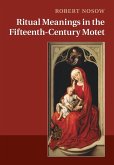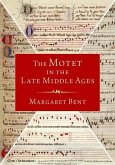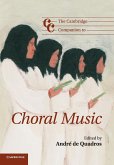A re-evaluation of the Latin-texted motet during the age of Du Fay.
During the lifetime of Guillaume Du Fay (c. 1400-1474) the motet underwent a profound transformation. Because of the protean nature of the motet during this period, problems of definition have always stood in the way of a full understanding of this crucial shift. Through a comprehensive survey of the surviving repertory, Julie Cumming shows that the motet is best understood on the level of the subgenre. She employs new ideas about categories taken from cognitive psychology and evolutionary theory to illuminate the process by which the subgenres of the motet arose and evolved. One important finding is the nature and extent of the crucial role that English music played in the genre's transformation. Cumming provides a close reading of many little-known pieces; she also shows how Du Fay's motets were the product of sophisticated experimentation with generic boundaries.
Table of content:
Introduction; Part I. Models and Methods: 1. Approaches and analogies; 2. Subgenre, interpretation, and the generic repertoire; 3. Fifteenth-century uses of the term 'motet'; Part II. Motets in the Early Fifteenth Century: The Case of Bologna Q15: 4. The motet section of Bologna Q15 and its ramifying roots; 5. A new hybrid subgenre: the cut-circle motet; 6. Other new hybrid subgenres; 7. The motet in the early fifteenth century: evolution and interpretation; Part III. Motets in the Mid-Fifteenth Century: The Case of the Trent Codices: 8. Motets in the Trent codices: establishing the boundaries; 9. English and continental cantilena-style motets; 10. Motets with a tenor cantus firmus c. 1430-1450; 11. Freely composed four-voice writing in transition; 12. The four-voice motet c. 1450-1475.
Hinweis: Dieser Artikel kann nur an eine deutsche Lieferadresse ausgeliefert werden.
During the lifetime of Guillaume Du Fay (c. 1400-1474) the motet underwent a profound transformation. Because of the protean nature of the motet during this period, problems of definition have always stood in the way of a full understanding of this crucial shift. Through a comprehensive survey of the surviving repertory, Julie Cumming shows that the motet is best understood on the level of the subgenre. She employs new ideas about categories taken from cognitive psychology and evolutionary theory to illuminate the process by which the subgenres of the motet arose and evolved. One important finding is the nature and extent of the crucial role that English music played in the genre's transformation. Cumming provides a close reading of many little-known pieces; she also shows how Du Fay's motets were the product of sophisticated experimentation with generic boundaries.
Table of content:
Introduction; Part I. Models and Methods: 1. Approaches and analogies; 2. Subgenre, interpretation, and the generic repertoire; 3. Fifteenth-century uses of the term 'motet'; Part II. Motets in the Early Fifteenth Century: The Case of Bologna Q15: 4. The motet section of Bologna Q15 and its ramifying roots; 5. A new hybrid subgenre: the cut-circle motet; 6. Other new hybrid subgenres; 7. The motet in the early fifteenth century: evolution and interpretation; Part III. Motets in the Mid-Fifteenth Century: The Case of the Trent Codices: 8. Motets in the Trent codices: establishing the boundaries; 9. English and continental cantilena-style motets; 10. Motets with a tenor cantus firmus c. 1430-1450; 11. Freely composed four-voice writing in transition; 12. The four-voice motet c. 1450-1475.
Hinweis: Dieser Artikel kann nur an eine deutsche Lieferadresse ausgeliefert werden.








